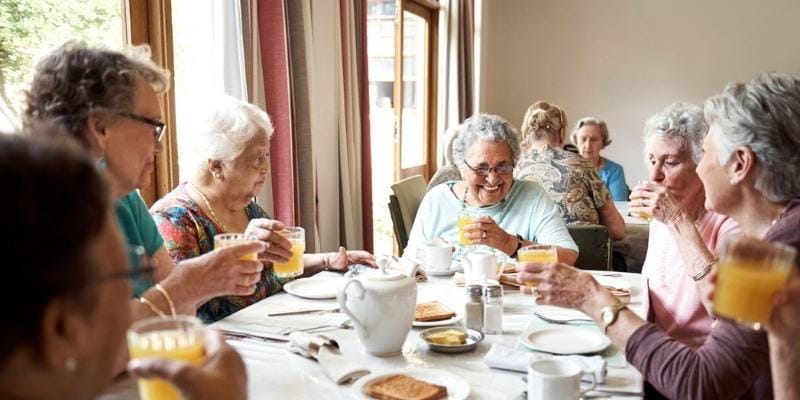Moving from the comfort of a home where you have spent many happy years, into a care setting might be terrifying. The many changes, including a new way of life, new people, and new routines and procedures – it is a huge shift, which is why many individuals struggle to adjust to care home living.
Personalising your space can help you maintain your individuality while making the major step of moving into a care facility less daunting. Making your room as comfortable as possible by decorating and furnishing it with familiar items may provide comfort, assist you in settling in, and make you feel better about the situation. (Carehome.co.uk)
Take a look at this list to learn a few tips and tricks on how to make your care home feel more like home.
Bedding From Home
Allowing new residents to bring their own bedding is a simple yet effective method to help them feel at home. Ideally, this should be something one-of-a-kind, and recognisable that helps them relax and quiet down. If they do not want to bring something from home, offer them the option to choose a new design instead. It is amazing how a throw or blanket on the bed can make your residents’ rooms appear and feel cosier. Matching curtains and throw cushions can also help personalise the space.
Lighting, Colours and Décor
The décor of a care setting is important in making it feel less clinical. Recent studies have indicated that having a nostalgic décor in facilities that accept elderly citizens may be very calming since it is an aesthetic that the inhabitants are familiar with. Care settings may make individuals feel more at ease by taking modest actions like these.
Lighting has also been found to impact an individual’s mental state and capacity to remain mobile. Natural lighting should be used wherever feasible to make the space feel more welcoming.
Pictures of Family & Friends:
Having reminders of family and friends, both past and present, may help residents feel more at ease. It is also a good idea to display photos of the individual when they were younger. Make the photographs the focal point of the room’s décor.
Homely Smell
Care homes will undoubtedly not smell the same as someone’s own home. Try bringing perfumes, air fresheners, or washing powders from home, to help mimic the comfortable scents that a resident is partial to. Every home has a distinct fragrance, even if we do not always notice it. Your home’s scent is probably so familiar to you that you do not even notice it when you walk in. Try to recreate that sense of familiarity in your care home with scents from home.
Furniture
Whether at all feasible, measure the room ahead of time to see if any of your furniture may be carried along. It is conceivable that you or a loved one has an emotional attachment to a certain chair since it was “theirs.” Take it with you if it will fit.
Keep in mind that any furnishings must be fire retardant for reasons of health and safety.
Bring your Favourite Books and Music
Books, music, films, and other forms of media remain unchanged no matter where we are or how long it has been since they were created. Memories can be firmly tied to a certain song or album, and it’s actually been proven that music has a positive impact on those suffering with dementia.
As much Autonomy as possible
A care facility should not merely take away a person’s independence. Their duty is to assist the individual in achieving the greatest amount of autonomy and independence feasible. This might mean that a resident may have hobby materials or a kettle in their room to prepare a hot drink for oneself or when family members arrive. When a resident is able to continue living their life to their fullest independent capacity, they feel empowered and more likely to feel comfortable and happy in their new care home setting.

Dementia Awareness course
In this dementia training we look at how you can support people to live well with dementia, including how to provide support in the later stages.
View course





